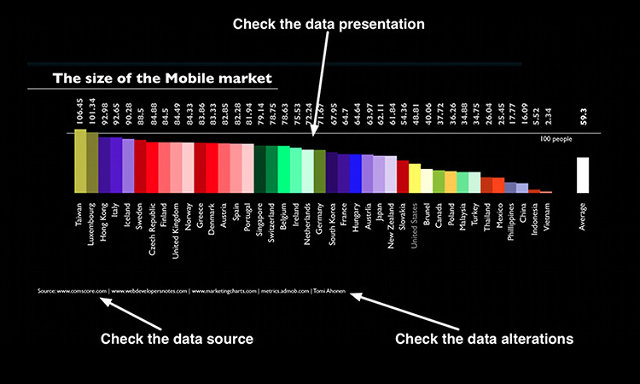Although new media tools allow anyone to publish on the Web, you should still be ethical and courteous when writing to or about others.
An emerging problem with online writing involves cyberbullying.
Consider this case of a Missouri ninth-grader who was arrested for creating a website in which she posted mean and disparaging remarks about a fellow classmate.
Because of her site, the teen was arrested and faced possible charges in juvenile court.
You can read the entire article below.
Teen Arrested for Creating Website to Bully Other Teen
Search This Blog
Sunday, May 4, 2014
Sunday, April 27, 2014
First-Person POV Advertising: Wear a Life Jacket
The New Media Writer looks at several create advertisements that attempt to get the viewer's attention. Most of these ads try to make the viewer identify with the images in the ad, or place themselves with the scene of the ad as the main protagonist.
However, this public service announcement, Sortie En Mer, takes things a bit further. Directed by Guy Cotten, the ad provides a first-person point of view perspective for the viewer to give them a sense of what it would be like to fall overboard without wearing a life jacket. It's message is clear: always wear a life jacket when on the water. However, the first-person perspective, and the interactive controls in the video, give it a more personal feel.
View the advertisement here:
Drowning Simulator
Do you think it's effective? Why or why not?
However, this public service announcement, Sortie En Mer, takes things a bit further. Directed by Guy Cotten, the ad provides a first-person point of view perspective for the viewer to give them a sense of what it would be like to fall overboard without wearing a life jacket. It's message is clear: always wear a life jacket when on the water. However, the first-person perspective, and the interactive controls in the video, give it a more personal feel.
View the advertisement here:
Drowning Simulator
Do you think it's effective? Why or why not?
Saturday, April 12, 2014
Cut! Get out of the shot!
In Chapter 11 on editing, The New Media Writer discusses editing for visuals, and covers the different kinds of errors that often appear in films.
MoviesTalk has compiled a list of the 10 most "disastrous" crew mistakes that occur when a member of the film crew are in the view of the camera.
These aren't "low-budget" films, but some of the biggest blockbusters in the last 10-20 years.
Look closely next time you watch a movie and see if you notice any of these errors.
10 Disastrous Crew Visible Mistakes in Movies
MoviesTalk has compiled a list of the 10 most "disastrous" crew mistakes that occur when a member of the film crew are in the view of the camera.
These aren't "low-budget" films, but some of the biggest blockbusters in the last 10-20 years.
Look closely next time you watch a movie and see if you notice any of these errors.
10 Disastrous Crew Visible Mistakes in Movies
Monday, April 7, 2014
Breastfeeding Dads Go Viral
Hector
Cruz, a photographer in Clarkesville, Tennessee wanted to support his wife’s
breastfeeding of their newborn daughter. Although he wanted to attend
breastfeeding classes and learn with her, he was often turned away from these
all-female groups, sometimes for good reasons. However, he felt helpless to
support his wife. In response, he began taking photographs of new dads
“breastfeeding” their infants.
Cruz offers an example of how “visual rhetoric” combined with digital technologies can be used reach audiences in far distant places from his Clarkesville
home, and making his campaign go viral.
Cruz
was just a humble dad in Tennessee who had a claim to make, and through the use
of new media tools was able to reach and convince a much larger audience than
he would be able to otherwise.
See the full story here:
Sunday, March 30, 2014
Misleading Maps
As discussed in The New Media Writer, texts that may seem simply "informational" must change depending on their audience, use, and purpose. As you might have already read, a driver on the interstate needs a different kind of map than a hiker in the woods, even though these maps might cover the same area.
Consider the discussion linked below of how common maps often significantly distort the relative size of Africa compared to other continents. In the clip from the TV show The West Wing, what do the cartographers state as some of the reasons for this distortion? Conduct your own research about how navigational maps have been designed over time, and how modern map makers make decisions about how to create new maps.
The TRUE Size of Africa – Have Our Maps Been Misleading For Over 500 Years?
Consider the discussion linked below of how common maps often significantly distort the relative size of Africa compared to other continents. In the clip from the TV show The West Wing, what do the cartographers state as some of the reasons for this distortion? Conduct your own research about how navigational maps have been designed over time, and how modern map makers make decisions about how to create new maps.
The TRUE Size of Africa – Have Our Maps Been Misleading For Over 500 Years?
Sunday, March 23, 2014
Drinking Glasses Only
When shooting your own images or video, you have to sometimes be careful about where you shoot, if you need permission, and what you're shooting. For instance, you usually need permission when shooting video on private property, and some locations may ban photography or videography.
Recently, a woman wearing Google Glass in a San Francisco bar was confronted by other patrons when they realized she was wearing Glass and recording at times. Because of this altercation, the bar has banned anyone from using Google Glass when inside. Other bars have also adopted this policy.
However, they haven't banned the use of smartphones, which could just as easily be used to record in these locations. What do you think this ban on Google Glass says about our general adoption or comfort with new technologies? Can you find other writing/recording technologies that have been initially banned?
The full story is here:
Bars Banning Google Glass
Recently, a woman wearing Google Glass in a San Francisco bar was confronted by other patrons when they realized she was wearing Glass and recording at times. Because of this altercation, the bar has banned anyone from using Google Glass when inside. Other bars have also adopted this policy.
However, they haven't banned the use of smartphones, which could just as easily be used to record in these locations. What do you think this ban on Google Glass says about our general adoption or comfort with new technologies? Can you find other writing/recording technologies that have been initially banned?
The full story is here:
Bars Banning Google Glass
Sunday, March 9, 2014
Ten Funny Proofreading Mistakes
As discussed in Chapter 11 of The New Media Writer, editing is an important step in the writing process.
However, sometimes too much attention can be paid to the big picture of editing and revising, and not enough to the smaller errors that proofreading can find.
Here are some of the funniest proofreading errors in a variety of media. As a general practice, keep your own database of proofreading mistakes and share them with the class as you locate examples.
Top Ten Funniest Proofreading Mistakes
However, sometimes too much attention can be paid to the big picture of editing and revising, and not enough to the smaller errors that proofreading can find.
Here are some of the funniest proofreading errors in a variety of media. As a general practice, keep your own database of proofreading mistakes and share them with the class as you locate examples.
Top Ten Funniest Proofreading Mistakes
Tuesday, March 4, 2014
An $80,000 Tweet
As discussed in Chapter 6, new media writing requires increased attention to audiences and how audiences receive information. A tweet might be intended for just your followers, but those followers can retweet and quickly spread your message.
Such was the case for the daughter for former Gulliver Preparatory School head Patrick Snay. Snay was just awarded $80,000 in a settlement with Gulliver Prep for an age discrimination complaint. However, this agreement depended on confidentiality, that no one else would know about the settlement.
Enter Snay's daughter, who took to Twitter to voice her opinion on the confidential matter to her nearly 1200 Twitter followers:
Read the whole story here:
Girl costs father $80,000 with 'SUCK IT' Facebook post
Such was the case for the daughter for former Gulliver Preparatory School head Patrick Snay. Snay was just awarded $80,000 in a settlement with Gulliver Prep for an age discrimination complaint. However, this agreement depended on confidentiality, that no one else would know about the settlement.
Enter Snay's daughter, who took to Twitter to voice her opinion on the confidential matter to her nearly 1200 Twitter followers:
Mama and Papa Snay won the case against Gulliver. Gulliver is now officially paying for my vacation to Europe this summer. SUCK IT.The message quickly spread, and school officials found out about the confidentiality breach. As a result, the judge ruled the settlement could be cancelled, costing Snay the loss of the $80,000.
Read the whole story here:
Girl costs father $80,000 with 'SUCK IT' Facebook post
Sunday, February 23, 2014
Narrating the Olympics
Chapter 9 of The New Media Writer discusses writing for different visual media, including dialogue and voice-over narration.
In the spirit of the Olympics, check out this curling match narrated by Sir David Attenborough. Notice how the narration doesn't just state what's obviously going on in the video, but how the narration compliments and adds value to watching the event.
You can read a more detailed post about the clip here:
Sir David Attenborough Narrates Women's Olympic Curling Event, And It Is Pure Gold
In the spirit of the Olympics, check out this curling match narrated by Sir David Attenborough. Notice how the narration doesn't just state what's obviously going on in the video, but how the narration compliments and adds value to watching the event.
You can read a more detailed post about the clip here:
Sir David Attenborough Narrates Women's Olympic Curling Event, And It Is Pure Gold
Tuesday, February 18, 2014
The Nonhuman Writers of Wikipedia
Chapter 5 of The New Media Writer discusses search engine robots and other web bots as potential audiences of your online writing. Wikipedia is just one of those sites to which you might contribute that uses bots to read its content.
However, those bots also help write articles, or more specifically, edit them.
Consider this recent article from MIT Technology Review that discusses work by Thomas Steiner that helps to pinpoint how much "writing" bots perform on Wikipedia (and Wikidata, a site that works in tandem with Wikipedia). Specifically:
...at the time of writing, across all language version of Wikipedia there are 10,407 edits being carried out by Bots and 11,148 by human Wikipedians. So that’s a 49/51 split between bots and humans.
But a closer look at the data reveals some interesting variations. For example, only 5 percent of the edits to the English language version of Wikipedia are being done by bots right now. By contrast, 94 percent of the edits to the Vietnamese version are by bots.
Check out the full article.
Sunday, February 9, 2014
Tweeting and Job Searches
In a recent post on CNNMoney, Daniel Bortz reports that many job recruiters are now researching potential new employees on social media. As he writes:
However, as Bortz states, there are some best practices when using Twitter to build an online presence. Specifically, he lists the following:
"If you want to shine in a competitive workforce, take to Twitter. Nearly 95% of recruiters surveyed by software firm Jobvite used or planned to use social media to find and vet candidates last year."Twitter allows you to quickly build a social media presence, since tweeting is often quicker than creating other social media content, such as lengthier blog posts.
However, as Bortz states, there are some best practices when using Twitter to build an online presence. Specifically, he lists the following:
- Perfect the profile
- Follow the right crowd
- Tweet with value
- Pay it forward
View the full article below to read more about how these practices can help you use Twitter to land your next position.
Sunday, February 2, 2014
Media Ecology, PETA, and Publican Quality Meats
Recently, the organization People for the Ethical Treatment of Animals (PETA), placed an advertisement right next to Publican Quality Meats (PQM) in Chicago, IL.
Given that PETA is trying to get people to stop killing animals for food, this placement makes sense, trying to get their message to their audience as they're going in to get meat.
However, sometimes this kind of placement can backfire, especially if your audience also feels that the target you're arguing against is one of the good guys.
Most consider that even though PQM still sells meat, their approach is more ethical than other meat sellers, in that they do business with farms that sell free range, naturally fed animals who have a better life than most animals raised for slaughter.
While PETA might have had the right idea about ad placement, putting their message near where their audience probably frequents, they might have chose meat sellers who aren't as conscious of where their animals come from.
Read more about this story at the following link. Also consider PQM's response to PETA. What tone do they take? What claim do they make, and how do they support this claim?
Publican Quality Meats Dishes Up Classy Response To PETA Billboard
Given that PETA is trying to get people to stop killing animals for food, this placement makes sense, trying to get their message to their audience as they're going in to get meat.
However, sometimes this kind of placement can backfire, especially if your audience also feels that the target you're arguing against is one of the good guys.
Most consider that even though PQM still sells meat, their approach is more ethical than other meat sellers, in that they do business with farms that sell free range, naturally fed animals who have a better life than most animals raised for slaughter.
While PETA might have had the right idea about ad placement, putting their message near where their audience probably frequents, they might have chose meat sellers who aren't as conscious of where their animals come from.
Read more about this story at the following link. Also consider PQM's response to PETA. What tone do they take? What claim do they make, and how do they support this claim?
Publican Quality Meats Dishes Up Classy Response To PETA Billboard
Monday, January 27, 2014
Style and NFL Logos

With the Super Bowl coming up, this might be a good time to look at the brand mark that each team produces for its brand identity.
In general, most teams try to create a brand mark that looks tough, aggressive, and other adjectives we might associate with football or contact sports in general.
However, a slight change in the style of the brand mark can give it a completely different meaning. Consider the NFL brand marks as revised by David Rappoccio if designed from a hipster perspective.
In what other ways might you revise NFL (or any) brand mark? How does Rappoccio's revisions make the brand marks unsuitable for their intended purpose (or do any of them seem better)?
You can see all the logos here:
What if the NFL Logos Were Hipsters?
Labels:
brand marks,
Chapter 11,
Chapter 4,
Design,
logos,
revision,
style
Sunday, January 19, 2014
Rickrolling the Teacher
You may have heard of the Internet meme called "Rickrolling," which is surprising an audience with the music video of Rick Astley's "Never Gonna Give You Up." The surprise comes when the audience thinks they author is sending them to one site, but instead sends them to the video.
(For the Wikipedia article on "Rickrolling," go here.)
If you just clicked on the link above, you've seen what I mean.
The actual Wikipedia article is here.
Ok, it's actually here.
Recently, a student "rickrolled" his physics professor by starting the first word of each line of his paper with one of the lyrics from the song. This is an interesting way to remediate new media back into old media, taking an online meme and putting it offline in a printed document. This rickrolling also required the student to think about layout, whether or not he consciously understood his design choices this way at the time.
Click below the full article from io9.com (for real this time).
Student Rickrolls His Teacher in this Ingenious Quantum Physics Essay
(For the Wikipedia article on "Rickrolling," go here.)
If you just clicked on the link above, you've seen what I mean.
The actual Wikipedia article is here.
Ok, it's actually here.
Recently, a student "rickrolled" his physics professor by starting the first word of each line of his paper with one of the lyrics from the song. This is an interesting way to remediate new media back into old media, taking an online meme and putting it offline in a printed document. This rickrolling also required the student to think about layout, whether or not he consciously understood his design choices this way at the time.
Click below the full article from io9.com (for real this time).
Student Rickrolls His Teacher in this Ingenious Quantum Physics Essay
Sunday, January 12, 2014
A New Take on Calvin Klein Ads
You've probably seen Calvin Klein ads with chiseled, male models trying to sell their clothes, perfume, and other goods. As appeals go (covered in Ch. 2), these obviously fall under sex appeal.
The tumblr blog linked below depicts a mock CK ONE ad campaign by inserting the comedian Louis CK as the "model."
LOUIS CK ONE
While humorous, we can ask questions about how ethos changes when Louis CK is the model rather than what we would typically expect. How does the audience change? How does the brand perception change? As an activity, you might create you own mock ads with other celebrities or personas and see how an audience reacts when viewing them.
The tumblr blog linked below depicts a mock CK ONE ad campaign by inserting the comedian Louis CK as the "model."
LOUIS CK ONE
While humorous, we can ask questions about how ethos changes when Louis CK is the model rather than what we would typically expect. How does the audience change? How does the brand perception change? As an activity, you might create you own mock ads with other celebrities or personas and see how an audience reacts when viewing them.
Tuesday, January 7, 2014
Infographics Lie?
We often take the truthfulness of infographics for granted, but they can often visually skew data and misrepresent facts for rhetorical purposes.
This excellent article by Randy Olson discusses the different ways infographics are often manipulated to skew the reader's perception. The main 3 methods include:
1. Using visual cues such as color or shape to make a part of the design stand out that numerically might not be noticeable.
2. Using unreliable or biased data sources upon which the visual is based.
3. Excluding, transforming, or manipulating the data itself to create a narrower picture.
Check out the full article here:
Infographics Lie. Here's How To Spot The B.S.
This excellent article by Randy Olson discusses the different ways infographics are often manipulated to skew the reader's perception. The main 3 methods include:
1. Using visual cues such as color or shape to make a part of the design stand out that numerically might not be noticeable.
2. Using unreliable or biased data sources upon which the visual is based.
3. Excluding, transforming, or manipulating the data itself to create a narrower picture.
Check out the full article here:
Infographics Lie. Here's How To Spot The B.S.
Subscribe to:
Posts (Atom)














